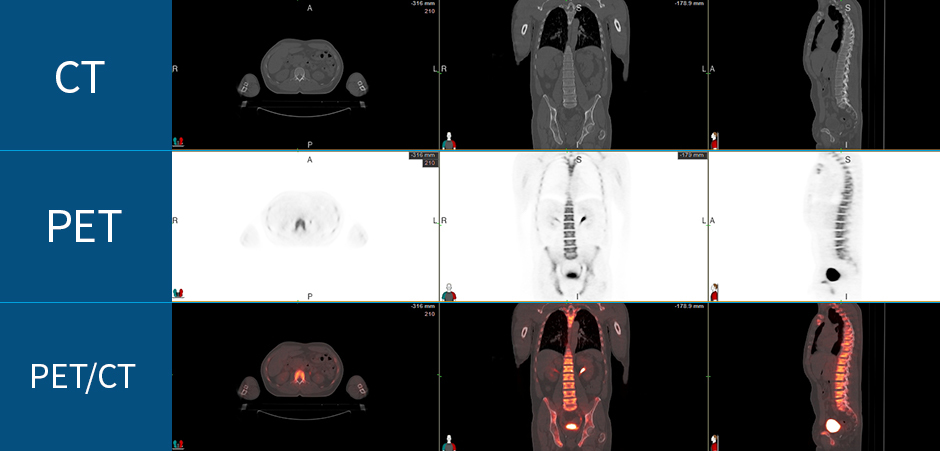If your doctor wants to determine whether or not you have a certain condition, evaluate how advanced a medical condition is, pinpoint the location of a cancerous tumor, or find out if a medical treatments is working, he or she will probably order an imaging test called a PET/CT scan. This diagnostic tool helps doctors see abnormalities inside the body.
PET/CT is an abbreviation for Positron Emission Tomography/Computed Tomography. PET and CT are two imaging techniques. A CT scan uses X-rays to create detailed images of specific areas of your body that show your doctor how certain cells or tissues look.
PET scans use a different imaging technique that helps your doctor understand how certain cells or tissues are behaving. These scans measure the amount of energy that cells are using. Highly active cells such as your brain and heart use more energy. However, many types of cancerous cells also use more energy. than healthy cells, so they will appear more noticeable on a PET scan. A PET scan can also reveal if blood flow is limited in certain areas of the heart and how your brain is functioning.
A PET/CT scan is the combination of both a PET scan and a CT scan in one machine. The below graphic shows the difference of a bone scan using CT, PET and PET/CT.

How does a PET/CT scan work?
Immediately Before undergoing a PET/CT scan, a patient receives an injection of a solution (or tracer) that includes glucose (sugar) and a small amount of radioactive material. As The injected solution tracer flows through the bloodstream, so the organs and tissues in the body can absorb it. The patient will then lie on a table and slides into a scanner that may cover all or part of the body, depending on the area being evaluated.
As the injected solution flows through the bloodstream, organs and tissues in the body absorb it. The PET/CT scanner creates X-ray images, as well as images that show doctors any abnormalities in organ and tissue cells.
What Does a PET/CT Scan Do?
A PET/CT scan can detect cancerous and noncancerous tumors, reveal whether cancer has spread, reveal if a cancer treatment is working, or reveal whether a prior cancer has come back. PET/CT scans also detect abnormalities in other parts of the body, such as heart disease and brain injuries or disorders.
Benefits of Combining the PET and CT Images in One Scan
Undergoing one PET/CT scan rather than separate PET and CT scans is more convenient and less stressful to patients. Additionally, because the combined scan provides a comprehensive picture of both the physical structure and the activity of cells, it provides a more complete snapshot that doctors can use to draw accurate conclusions about whether diseases or disorders are present and/or whether they're improving or worsening.
